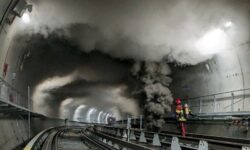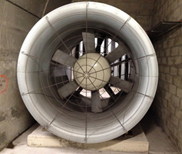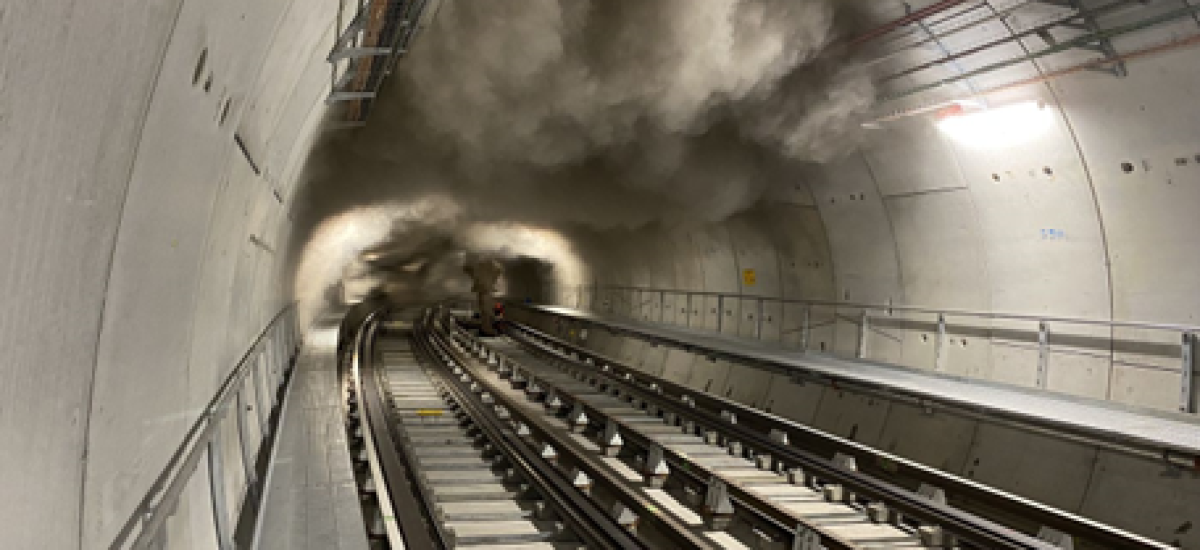28/9/2023
Smoke-extraction systems in new or refurbished underground stations are often very specific. There are several reasons for this:
- The use of very high-power fans, for both sanitary ventilation and smoke venting, in extraction or insufflation mode, depending on the scenario
- Fans may operate in pairs to facilitate maintenance operations
- Motorised dampers may be used to switch between the smoke-venting of station platforms and smoke-venting in tunnels between stations
- Local or remote control of smoke-venting systems, etc.
The venting systems above do not fall within the usual framework defined by the series of French standards applied to Fire Safety Systems (Systèmes de Mise en Sécurité Incendie – SMSI) and Actuated Safety Devices (Dispositifs Actionnés de Sécurités – DAS). Because of this, the body in charge of compliance inspections (inspection office) is not able to issue a notice on the solution adopted by the project.
The fire safety regulations for French stations (Article GA 28.8 of the modified order of 30 June 1980) stipulate that a third-party verification must be carried out by a laboratory in instances like this. As an authorised French laboratory (decree of 21 July 1994), Efectis is authorised to carry out these verifications.


Examples of smoke extraction fans for metro stations
Efectis was recently asked to carry out third-party verifications for the Paris, Lyon, and Toulouse metro systems. It focused mainly on verifying the robustness of the smoke-extraction system on the basis of the following parameters:
- Priority of smoke extraction command over comfort command
- Actual implementation of the various scenarios
- Priority of firefighter stop command over smoke extraction command
- No modification of the scenario in the event of power failure and subsequent power recovery
- Feedback of faults like power failure, loss of remotely operated link and safety position not reached, etc.
- Consistency of man-machine interfaces and procedures, etc.
The verifications above are generally carried out in two distinct phases:
- Efectis is carrying out an initial review during the phase involving the functional analysis of the solution and definition of its technical architecture, to check that the fundamental requirements of the French SMSI and DAS standards have been considered
- In the commissioning phase, Efectis carries out technical and functional verifications on the installations, simulating different fault and safety sequences during on-site testing
The verifications above are carried out in a framework very similar to the DAS verifications, for which Efectis is the only ISO-17020 authorised and accredited laboratory.
If tests are conclusive, Efectis issues a notice in accordance with Article GA 28.8, enabling the safety commission to issue a favourable opinion on the opening of the station to the public.
These verifications complement Efectis’ services for underground stations, including:
- Smoke-extraction-engineering studies in the design phase, using simulations to check that flow rates and the positioning of smoke vents are appropriate
- Fire-resistance assessment to check the performance of equipment installed in stations (smoke-extraction ducts, partitioning and motorised draft curtains, etc.)
- In-situ smoke-extraction tests, to verify performance in real-life situations
- Air-velocity and rate-flow measurements in installations, etc.
For further information, please contact: Raphael Thiery

